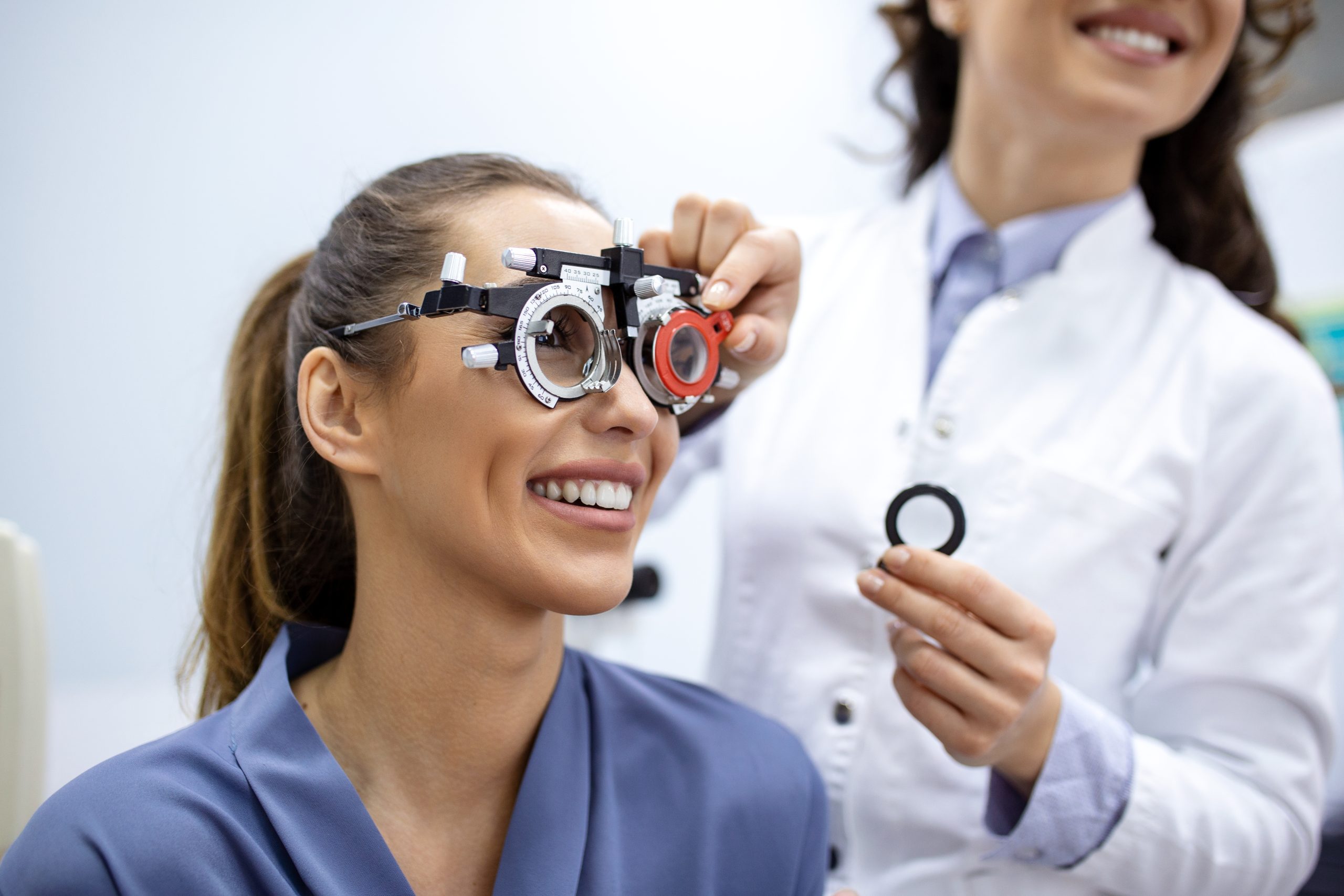Top Reasons to Visit an Optometrist Chino for Your Eye Health
Top Reasons to Visit an Optometrist Chino for Your Eye Health
Blog Article
Checking Out the current Technological Developments in Optometry and What They Mean for Optometrists
From the precision of Optical Comprehensibility Tomography to the nuanced understandings used by AI-driven diagnostic tools, these innovations are establishing brand-new requirements in person evaluation and therapy. As these improvements penetrate the method, eye doctors are encountered with the difficulty of accepting these tools to enhance individual results.
Technologies in Diagnostic Devices
Progressing the field of optometry, innovations in diagnostic tools have actually revolutionized the way eye care experts analyze and detect ocular problems and aesthetic disabilities. The previous decade has actually witnessed substantial technical developments, enabling more comprehensive and precise examinations.
One more secret development is the introduction of innovative corneal topography systems, which map the surface curvature of the cornea with accuracy. These devices are specifically valuable for fitting contact lenses and detecting corneal conditions. Electronic retinal imaging has changed traditional ophthalmoscopy, offering comprehensive, breathtaking sights of the retina that facilitate comprehensive visual evaluations.
The development of wavefront aberrometry has actually likewise been essential, allowing the evaluation of refractive mistakes with unrivaled accuracy (Optometrist Chino). This innovation assists in tailoring corrective lenses and boosting medical end results for refractive surgical treatments. Jointly, these analysis innovations encourage optometrists to provide exceptional individual treatment, making certain very early treatment and tailored treatment methods, ultimately boosting aesthetic health and wellness outcomes
AI in Person Administration
Structure on the structure of innovative analysis devices, the unification of fabricated knowledge (AI) in individual management represents a transformative jump for optometry. AI systems are progressively used to boost performance, accuracy, and customization in individual treatment.
Additionally, AI-driven platforms assist in structured client interactions and management procedures. Automated scheduling, digital appointments, and customized follow-up plans not just boost client complete satisfaction however additionally optimize time monitoring for professionals. These systems can triage clients based on the necessity of their conditions, ensuring that those in essential demand receive prompt attention.
Moreover, AI improves decision-making by supplying optometrists with evidence-based referrals and therapy paths. By integrating data from digital wellness records, AI tools provide insights that notify scientific choices, lowering the threat of mistakes and enhancing person outcomes. As AI continues to progress, its role in individual monitoring will likely expand, improving the landscape of optometric care.
Developments in Retinal Imaging
In the world of optometry, retinal imaging has seen exceptional technical advancements that are enhancing diagnostic abilities and individual treatment. Advancements such as Optical Coherence Tomography (OCT) and fundus photography have actually changed how optometrists analyze the retina and envision. OCT, specifically, supplies high-resolution, cross-sectional pictures of the retina, enabling the comprehensive evaluation of its layers. This ability is vital for very early detection and management of conditions like glaucoma, diabetic person retinopathy, and age-related macular deterioration.
Improved imaging methods like OCT angiography are further refining analysis accuracy. This non-invasive strategy maps blood circulation in the retina, providing critical insights into vascular health and wellness without the demand for color shots. Additionally, adaptive optics innovation is being incorporated into retinal imaging systems to deal with eye aberrations, delivering extraordinary image clearness. Such improvements help with the identification of minute retinal changes that can indicate disease progression.
In addition, improvements in artificial knowledge are boosting retinal imaging by enabling automated analysis of large datasets. These systems assist eye doctors in determining patterns a sign of pathology, thereby improving analysis precision and efficiency. Collectively, these technologies are see this site changing retinal imaging into a foundation of modern eye care, boosting end results and expanding restorative possibilities.
Teleoptometry's Expanding Role
Teleoptometry is increasingly ending up being an essential element of eye care, driven by advancements in electronic interaction and analysis tools. visit the site This is particularly valuable in underserved and rural areas where access to specialized eye treatment is typically limited.
The integration of fabricated knowledge (AI) further improves teleoptometry, enabling the evaluation of visual information and aiding in the discovery of ocular problems such as glaucoma and diabetic retinopathy. AI-powered formulas can rapidly translate complex imaging information, providing eye doctors with useful insights that strengthen medical decision-making.
Moreover, teleoptometry supports connection of care via seamless combination with electronic health and wellness documents (EHRs), enabling eye doctors to preserve thorough person histories. When seeking advice from with different practitioners., this guarantees that clients get tailored and consistent care also.
Regardless of these benefits, challenges stay, consisting of making certain data safety and handling individual assumptions. Teleoptometry represents a substantial stride in the direction of even more accessible, efficient, and patient-centered eye care. As innovation progresses, its function is positioned to broaden additionally.

Future Fads in Eye Treatment
A myriad of cutting-edge patterns is set to reshape the future of eye care, driven by technological advancements and the evolving needs of people. One substantial fad is the assimilation of expert system (AI) in diagnostics, which assures to boost the accuracy and effectiveness of eye evaluations. AI algorithms can analyze substantial quantities of information from retinal pictures, possibly detecting problems like diabetic person retinopathy and glaucoma earlier than traditional approaches.
In addition, tailored medicine is acquiring grip in optometry, with hereditary testing informing tailored therapy plans. This approach intends to maximize individual results by customizing treatments to individual hereditary profiles. Wearable technology, such as clever get in touch with lenses, is also on the perspective, providing real-time surveillance of intraocular pressure or glucose degrees, therefore providing continuous understandings into systemic and Bonuses ocular health and wellness.
The adoption of enhanced reality (AR) and digital truth (VR) in training and individual education is an additional emerging fad. These innovations supply immersive experiences that can improve understanding and skills both for eye doctors and clients. As these fads develop, eye doctors need to stay abreast of technological innovations to give sophisticated care, making certain enhanced patient end results and fulfillment in the dynamic landscape of eye treatment.
Final Thought

Jointly, these analysis developments empower optometrists to deliver premium client care, making sure very early treatment and customized therapy approaches, eventually improving visual health and wellness outcomes.

As these modern technologies continue to advance, optometrists should adjust and incorporate them into technique, inevitably enhancing operations effectiveness and raising the standard of eye treatment provided to clients.
Report this page